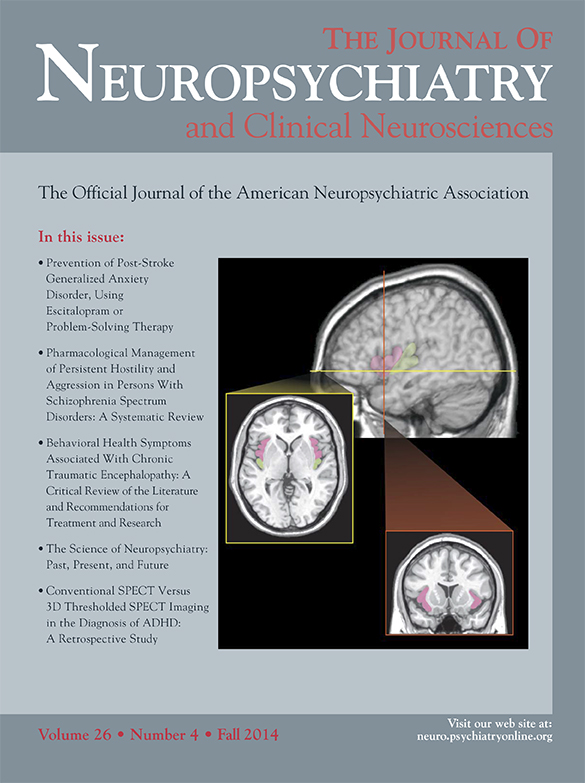Case Report
A previously high-functioning 41-year-old man presented to the emergency department with an acute onset of paranoid delusions and short-term memory difficulties. He was agitated and stated that “a war is going,” and that he could see there was “going to be peace.” He was concerned that someone was going to harm his two daughters and was suspicious that his wife might be a police officer. The patient’s wife confirmed that “he had not slept for the past 5 nights.” He had no grandiose delusions or euphoria.
The patient was healthy, except for a history of hypothyroidism, for which he was taking levothyroxine. His psychiatric history revealed that he had experienced a single psychotic episode 6 months prior, for which he was treated with aripiprazole. At that time, the symptoms were determined to be the result of the patient’s abuse of anabolic steroids, which he discontinued after discharge.
The patient and wife adamantly denied any anabolic steroid use at this time. He was admitted and titrated to 2 mg risperidone for an acute psychotic event, and after 4 days, he made the decision to return home. Hours after leaving the hospital, he returned to the emergency department due to worsening of paranoid delusional symptoms and was admitted. The patient now had a pronounced suspicion of the hospital staff, and his short-term memory problems became apparent, having to continuously be reintroduced to the physicians in charge of his care.
His dosage of risperidone was increased, but resulted only in sedation and without improvement in psychosis. The advanced age of the patient and lack of therapeutic effect of the antipsychotic medication led to the belief that the cause of the symptoms may be organic in nature. A CT scan and MRI scan were negative, as was the toxicology screen.
The only abnormality in his blood work was that the antithyroperoxidase antibody level was greatly increased (2047 IU/mL; normal value, <35 IU/mL), suggesting his hypothyroidism was secondary to Hashimoto’s thyroiditis. The high levels of antithyroperoxidase antibody, along with new, otherwise unexplained psychiatric symptoms, confirmed a diagnosis of Hashimoto’s encephalopathy.
The patient was weaned off risperidone and given intravenous methylprednisolone, 1000 mg/day for 4 days. His symptoms diminished, and he was discharged free of psychosis. At the time of discharge, he had been reduced to 1 mg risperidone and was prescribed an oral prednisone taper over 2 weeks. Three months after discharge, his antithyroperoxidase antibody level was down to 797 IU/mL. The patient was followed by a neuroendocrine team and remained free of psychosis at the 1-year follow-up investigation.
Discussion
Since it was first described in 1966, there have been roughly 200 documented cases of Hashimoto’s encephalopathy.
1 It is defined as an encephalopathy associated with elevated titers of antithyroid antibodies.
2,3 The name Hashimoto’s encephalopathy itself is controversial, because it is unclear whether the elevated antibodies found in Hashimoto’s thyroiditis, an autoimmune thyroid condition, play a role in the encephalopathy or are merely an autoimmune epiphenomenon.
2,3 Contrary to the presented case, levels of autoantibodies have not been found to correlate with the clinical severity or response to treatment.
4 Thus, some feel that due to this ambiguity and the inconsistency of clinical findings, steroid-responsive encephalopathy associated with autoimmune thyroiditis may be a more accurate term for the syndrome.
5Hashimoto’s encephalopathy can have a myriad of neurologic and psychiatric clinical presentations. These include stroke-like episodes, movement disorders, coma, generalized seizures, and a spectrum of behavioral and psychiatric symptoms.
1–5 In the case presented here, the previous psychotic episode may actually have been an unrealized manifestation of Hashimoto’s encephalopathy. However, if it had been due to an unrelated etiology, the idea that previous experiences can predispose the expression of Hashimoto’s encephalopathy symptoms should be explored further.

